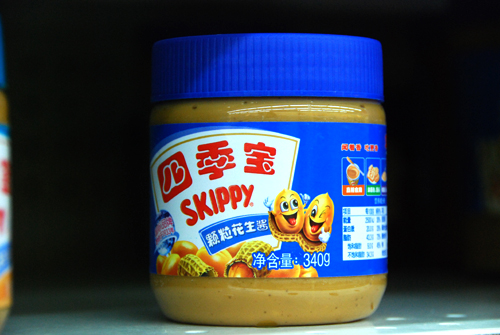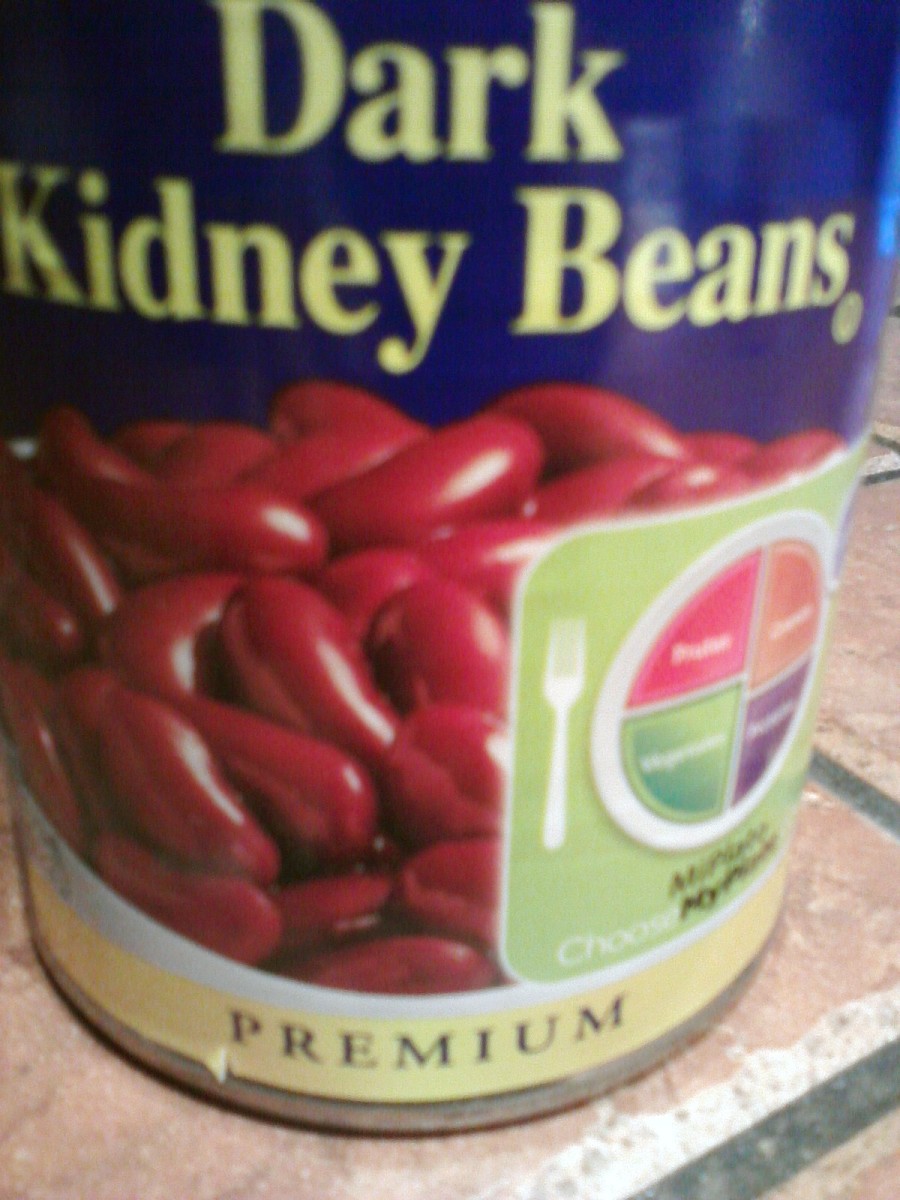All About Peanut Butter - A History, from Peruvian Tombs to Skippy Jars

Many say Americans have contributed two decent things to the world: jazz and baseball. I would venture to add a third component to that mix: peanut butter. It is, after all, seen as very American- and in a positive way. Heck, I was once approached by a Yakuza boss in Narita Airport who noticed me spooning the stuff out of a Skippy bottle, and he struck up an entire conversation with me about “Skippy! American!” as his body guards watched on in the distance. Clearly peanut butter is some powerful stuff.
Peanut Butter - A History
Peanut butter-like substances have been used many years and in many countries. Peanuts may date as far back as 950 B.C. and have even been found in Peruvian mummy tombs. According to PeanutButterLovers.com, “Africans ground peanuts into stews as early as the 15th century. The Chinese have crushed peanuts into creamy sauces for centuries. Civil War soldiers dined on ‘peanut porridge.’ ” The site points out, however, that such previous “uses, however, bore little resemblance to peanut butter as it is known today.”
Peanut butter was first made by George A. Bayle Jr. in 1890 at the behest of an unknown physician who thought the substance would make for a good protein substitute for those unable to chew meet. Apparently the physician had used a meat grinder to create the paste, while Bayle found a way to mechanize the process.
According to TIME.com, Dr. John Harvey Kellogg (yeah, the cereal guy) “patented a process for turning raw peanuts into a butter-like vegetarian health food” in 1895, which he “fed to clients at his Battle Creek, Mich. sanatorium” and which also contributed to peanut butter’s entrance into mainstream food culture, but not as much as one might imagine, as Kellogg’s early peanut butter was not so yummy, given that it was supposedly made with peanuts that “were steamed, instead of roasted, prior to grinding.” Despite this, peanut grinders soon came on the market (thanks to Joseph Lambert), and peanut butter emerged as an ingredient in several recipes.
In the early 1900s, peanut czar Dr. George Washington Carver developed over 300 uses for peanut butter and improved peanut horticulture, making the spread even more popular. By 1904, peanut butter had made its international debut at the 1904 St. Louis Universal Exposition, where one C.H. Summer sold $705.11 worth of the stuff. In 1908, Kerma Products Company began selling peanut butter commercially- and has continued to do so ever since, making it the oldest peanut butter seller in the world.
Hydrogenated vegetable oil was added to peanut butter in 1922 by chemist Joseph Rosefield, who used the additional ingredient to prevent separation. The resulting improved product was called Skippy and became a national icon (which was first produced in Alameda, CA; the hometown of Yours Truly). Soon to follow were the Peter Pan (1928) and Jiff (1958) brands.
In 1994, reduced fat peanut butter was developed by the Arthur D. Little Inc’s Center for Technology and Product Development as a reaction for growing consumer demand for low-fat foods. This new version substituted poly-dextrose, water, and starch for fat. While it was met with mixed reviews, reduced fat peanut butter remains on the market to this day.
The popularity of peanut butter has inspired the production of other iterations, including smooth and chunky peanut butters, reduced sodium peanut butters, natural peanut butters (that require stirring), and even alternative nut butters, such as almond butter and cashew butter. Though not nearly as popular, almond and cashew butters are also quite delicious, and are slowly making their way into the aisles of large grocery store chains.
With all of its various versions and uses, peanut butter has become quite a commodity. “In 1992, statistics showed Americans alone consumed 857 million pounds of peanut butter or 3.36 pounds per person,” writes Peggy Trowbridge Filippone of About.com, and though “more than half the American peanut crop goes into the making of peanut butter… the majority of peanut butter consumed in the United States is imported.”
Peanut Butter Controversy
Peanut butter, while beloved, has its downsides, one of them being that the substance is a danger to those with peanut allergies. Time points out that over the 20th century many schools banned peanuts from their cafeteria menus to prevent problems, and foods that share common processing machinery with peanuts- or that contain any trace of peanuts or peanut butter- must be specially labeled.
The recent backlash against trans-fats has also brought some types of peanut butter into question (as the partially hydrogenated oils used to prevent separation are major trans-fat sources), and ingredient changes have become necessary to convince consumers to continue buying the no-stir spreads.
Furthermore, the 2009 salmonella outbreak at the Peanut Corporation of America, which, according to the Pittsburgh Post-Gazette “sickened 600 people around the nation… and may have killed eight,” and resulted in the recall of more than 1,800 peanut-containing products, dampened the innocent reputation of this delicious condiment to even non-allergic and trans-fat phobic individuals.
That said, one 2002 estimate has it that “the average American child eats 1,500 PB&J sandwiches before graduating from high school” and “peanut butter remains an $800 million industry.” Peanut butter, famous American icon that it is, has fan sites (such as Peanut-Butter.org), involvement in an internet meme, and even its own month (Peanut Butter Lover’s Month is in October).
Peanut Butter Trends
What are some future prospects for this classic American spread?
One interesting trend involves flavored peanut butter. While some companies such as Smucker’s have combined peanut butter and jelly in one container, others, such as P.B. Loco, tried out even more daring combinations, such as Sumatra Cinnamon Raisin, Asian Curry Spice, and Raspberry White Chocolate.
Another trend involves unique package design. For a while, Skippy sold its peanut butter in a squeeze bottle, and on a visit to Japan, I bought the spread in a similar bottle. The cool thing about my Japanese packaging was that the squeeze bottle had a decorative edge, which created a fancy-looking result. Perhaps this packaging will see a resurgence someday.
At any rate, we can certainly expect to see peanut butter used in new recipes, products, and cultural practices. What can I say? It’s a classic.
Comments from the Peanut Gallery!
What is your favorite type of peanut butter?
Sources & Further Reading:
A Brief History of Peanut Butter (TIME.com)
History of Peanut Butter (Peanut-Butter.org)
Peanut Butter History (Food Reference History)
The History of Peanut Butter (The Kitchen Project, Chef Stephen Holloway)
Who Invented Peanut Butter? (About.com, Mary Bellis)
History of Skippy (Skippy Peanut butter)
Peanut butter recall biggest in US history (Pittsburgh Post-Gazette)
Food scientists unveil low-fat peanut butter (The Day)
Low-fat peanut butter has low taste, high grit (The Deseret News)
Low-fat product drawing fire from the peanut gallery
Farmers, board battle over ‘lite’ peanut butter .
Gourmet Flavored Peanut Butter (The Nibble)
Flavored Peanut Butters (Chowhound)
Curry peanut butter, Chocolate-Chip Cookie peanut butter, and more … (A.V. Club)






